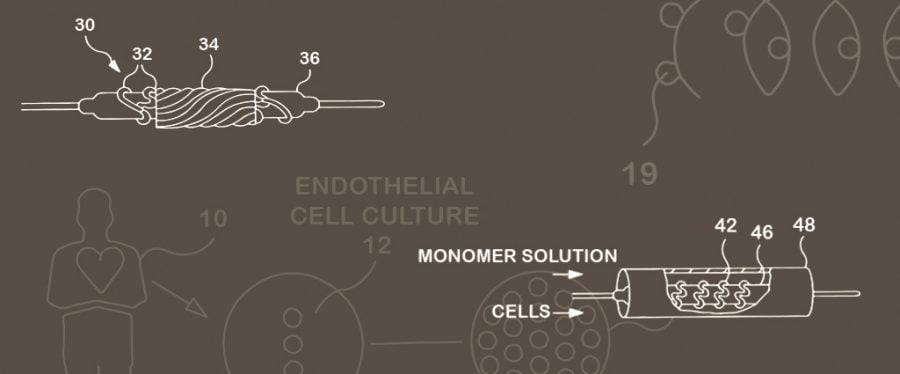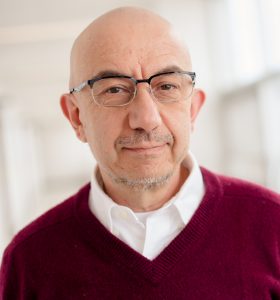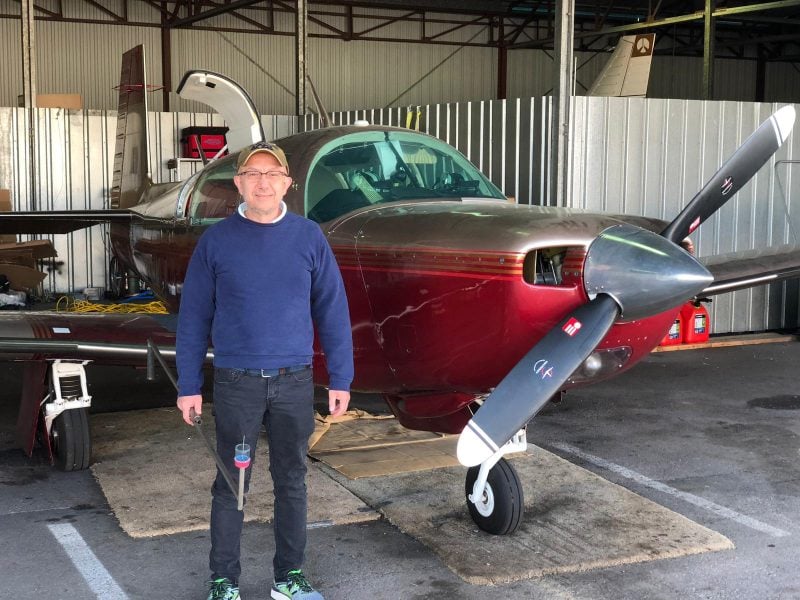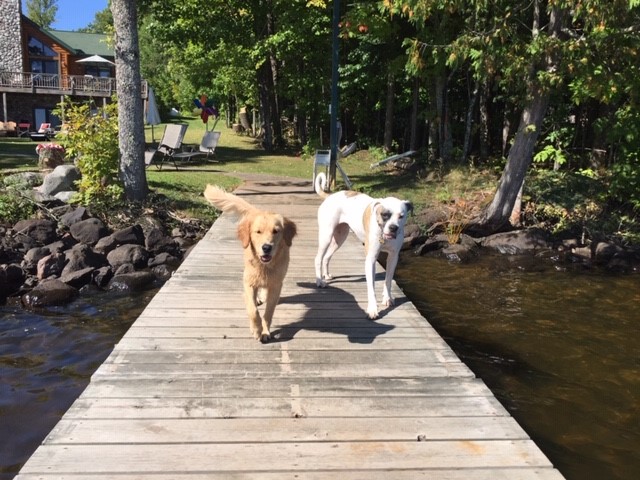
Orhan Soykan and Tim Kolesar generously shared their knowledge on Husky Bites, a free, interactive Zoom webinar hosted by Dean Janet Callahan. Here’s the link to watch a recording of his session on YouTube. Get the full scoop, including a listing of all the (60+) sessions at mtu.edu/huskybites.
Dean Janet Callahan had supper with Orhan Soykan, a prolific inventor and professor of practice in biomedical engineering at Michigan Tech with more than 100 patents to his name. Joining in will be one of Dr. Soykan’s former students, Tim Kolesar, MD, who earned his biomedical engineering degree at Michigan Tech in 2019 after first completing med school. He’s now a Development Quality Engineer at Abbott.
Who can be an inventor? “Anyone,” says Orhan Soykan. And he should know. Soykan has 37 issued U.S. patents and 66 pending U.S. patents.
Soykan specializes in implantable devices, biosensors, and molecular medicine. He is the co-founder of two start-ups and has been a consultant to more than 20 firms.

He has long been associated with Michigan Tech, first as a master’s student in electrical engineering (he graduated in 1986), then as an adjunct faculty member in the Department of Electrical Engineering. Then, seven years ago, after working 20 years at biomedical device powerhouse Medtronic and several more at startup YouGene, Soykan rejoined the University in a more formal way, as a professor of practice in Michigan Tech’s Department of Biomedical Engineering.
He teaches a biomedical instrumentation lab and courses on medical devices, medical imaging, and numerical physics. He also mentors senior design teams of undergraduate students who work on projects for industry clients, the final big design project of their senior year.
Michigan Tech BME alum, Tim Kolesar ‘19 was one of his students. “Dr. Soykan was my senior design team advisor,” says Kolesar. “Our team (three biomedical engineers and one electrical engineer) all worked together on a project for Stryker, investigating the thermal side effects of a surgical device used in brain surgery.”


Before coming to Michigan Tech, Kolesar earned a BS in Human Biology from Michigan State University, and then a Doctorate of Medicine from the American University of Antigua College of Medicine, in the Carribean. He also volunteered as a medical practitioner for the Himalyan Health Exchange, providing health care for underserved populations within remote regions along the Indo-Tibetan borderlands.
After graduating from Michigan Tech, Kolesar landed his dream job at Abbott, a multinational medical devices and health care company with headquarters in Abbott Park, Illinois, He works on cardiovascular devices for Abbott, including aortic and mitral heart valve replacements. At the moment he’s lead engineer on two projects, involved in device submission to the FDA in the US, and the EMA (European Medicines Agency) in the European Union.
Kolesar underscores the importance of time spent in the lab. During his time at Tech, he worked as an undergraduate researcher in the labs of biomedical engineering professors Dr. Rupak Rajachar and Dr. Jeremy Goldman, working on tissue engineering for injury repair in joints, and bioabsorbable stents for the heart. “These two opportunities played a large role in confirming my decision to pursue a career in biomedical engineering,” he says. “I believe the lab experience I gained at Michigan Tech played a pivotal role in securing my current role at Abbott.”
How do inventors get their ideas?
“I believe necessity is the mother of all invention. You must truly understand the problem and the boundaries the solution will have,” says Soykan. “After that, it is absolutely necessary to study scientific and engineering principles relevant to the problemAmong all his inventions, Dr. Soykan says he is most proud of those at the intersection of engineering and biology. His favorite: A method of isolating a small portion of a patient’s own heart muscle and converting it into a sensor to monitor levels of an antiarrhythmic heart medication.they will eventually become the tools for the development of the solution. And finally, you must look at work done by others, by reviewing technical literature and patent publications,” he adds.
“Now you are ready to tackle the problem by thinking as creatively as you can. This can be anywhere—outside when running or skiing, driving in traffic—make a list of the solutions you think of and discuss them with your colleagues and experts in the field. Finally, the ones that seem to pass the test, try them in the lab.”
Dr. Soykan, when did you first get into engineering? What sparked your interest?
I grew up in Ankara, the capital city of Turkey. I became interested in science and technology through my high school physics teacher. Eventually I began to build some electronic circuits as a hobbyist, which eventually turned into a profession. I cannot forget about the contributions of Mr. Spock from the original Star Trek series. (And yes, I am old enough to remember watching the original episodes each week on TV as a young boy!
What is your favorite out of all your inventions?
Among all my inventions, I am most proud of a method of isolating a small portion of a patient’s own heart muscle and converting it into a sensor to monitor levels of an antiarrhythmic heart medication.

Hometown, hobbies?
I earned my BS from Middle East Technical University, my MS from Michigan Tech and my PhD from Case Western Reserve University, all in electrical engineering. I worked for NASA in Huntsville, Alabama, the Food and Drug Administration in Rockville, Maryland, and Medtronic in Minneapolis and Tokyo, before becoming a part-time consultant to the medical device industry and a part time faculty member at Michigan Tech. I actually maintain two residences, one in Houghton, and the other in the Twin Cities. I’ve got labs in both homes. I commute weekly between the two locations with my single engine Mooney. When I am not working or flying, I’m usually busy training for my annual marathon, or cross country skiing at Tech trails.

Dr. Kolesar, When did you first get into engineering? What sparked your interest?
Whether I knew it or not, engineering has always been a part of me. My love for Physiology pushed me towards the world of medicine. However, during my third year of medical school, I had the pleasure of working with an orthopedic surgeon, and mechanical engineer, in Atlanta, Georgia. The experience truly opened my eyes to the realm of biomedical engineering, and sparked a fascination with the possibilities. This eventually led me back to Michigan Tech upon completion of my medical degree.
Hometown, hobbies?
My wife, Jenn and I were both raised in the Upper Peninsula of Michigan. We now reside in the Minneapolis area. During my time at Michigan Tech we loved being able to return to the Upper Peninsula. The Keweenaw quickly became our second home, especially Copper Harbor. We spend our free time biking, nordic and downhill skiing, camping, hiking, running, and exploring the outdoors with our two dogs Kewee (short for Keweenaw) and Birch Bark.
